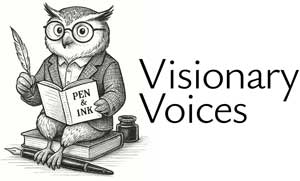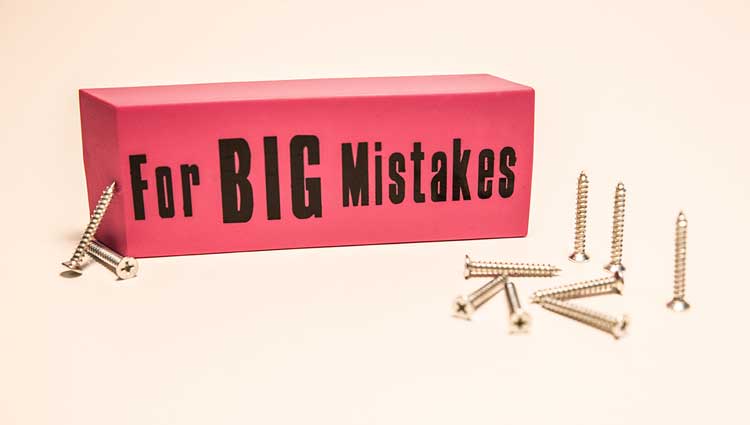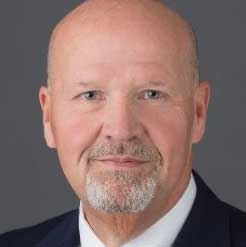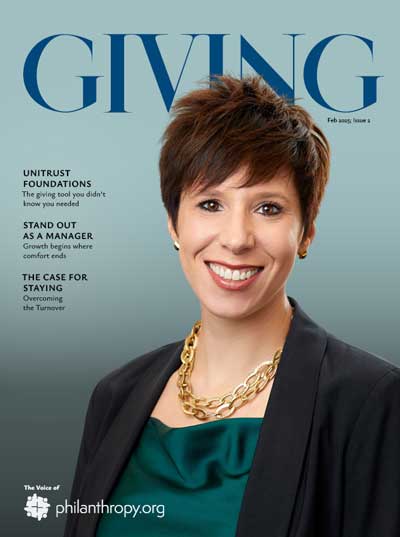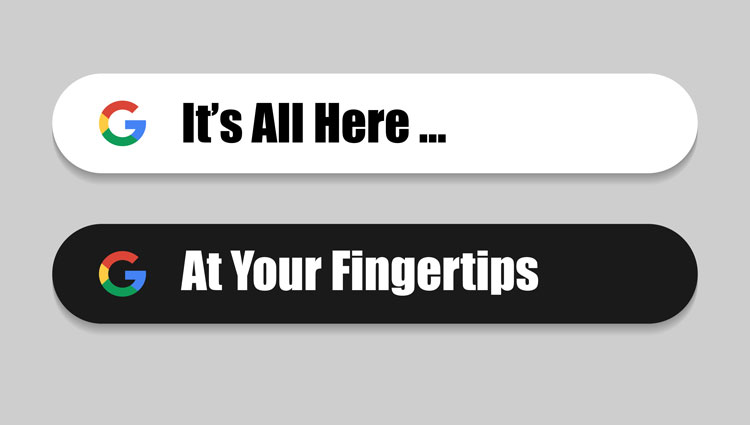My Ten Greatest Fundraising Mistakes
Eddie Thompson, a former development officer who founded Thompson & Associates estate planning, has graciously given us permission to reprint some of his blogs here on Philanthropy.Org. Eddie’s decades of experience working in the philanthropy sector mean he’s seen it all—and can write about it all with authority. I particularly like this post, because not only was Eddie brave enough to admit his mistakes, but he was also willing to break them down to share what we all can learn from them. That’s important, because mistakes can drive prospects and donors to the nonprofit next door.
Viken Mikaelian // Editor’s Note
What were some of your greatest professional mistakes?
In every Thompson & Associates public engagement, online interview, or continuing education seminar, that is the most frequent question I am asked. Tweet
Luckily, the most important lessons I’ve learned in my 40+ years of fundraising and charitable estate planning came near the beginning. Many of those experiences were painful, and it’s still somewhat embarrassing to shine a spotlight on my greatest mistakes. Nonetheless, things I learned from my stumblings have become essential elements of my fundraising career. Below are my top ten greatest mistakes (so far).
I was far too institutionally centered and not enough donor-centered.
“Eddie,” the potential donor said, “the only thing you are interested in is my money.”
I began my career as the Director of Planned Giving at a small liberal arts college. With no predecessor to “show me the ropes,” I was on a steep learning curve, much of it the result of trial and error.
My father was self-motivated as a volunteer fundraiser. He possessed two essential character qualities—rare even among nonprofit professionals.
- Dad was determined to help disadvantaged high school graduates wanting to pursue a college education—a luxury he could never afford.
- As committed as he was to raising money for deserving students, he cared as much about his donors as he did for his chosen mission.
The pressing needs of a typical nonprofit will consistently fight against this kind of donor focus.
The comment from one of our top institutional donors, “The only thing you are interested in is my money,” was a painful rebuke. Rather than defend myself to the offended donor, I replied, “You’re exactly right. However, I promise you this: I will never come back with any planned-giving proposal until I figure out how it will benefit you and your family directly.”
I talked too much and listened too little.
My biggest mistake was failing to realize that the donors’ story is almost always more important than the institutional story.
I quickly fell into the habit of listening to donors only to prepare my next point. If truth be told, my real objective was to have the potential planned-giving donor stop talking and listen to all my wonderful talking points. I was only minimally concerned with the donor’s thoughts, experiences, or values. I was pushing my standard plan that often did not address their greatest concerns. As a result, I often failed to connect with the donors’ unique estate-planning objectives.
Truly listening with genuine interest is not easy or as common as you may think. Some can’t bring themselves to do it, and it doesn’t automatically increase with knowledge, experience, or promotion. Without intentional efforts to develop listening skills, those career advancements can cause a professional to grow worse. While some new fundraisers are natural conversationalists and have the knack for connecting personally with donors, it is an acquired skill for the rest of us.
I did not effectively manage my work.
I allowed myself to be accountable for too many things.
I felt personally disorganized and unable to focus on my next steps. It wasn’t simply a matter of time management. The essential problem was my lack of prioritization. Things that were merely urgent were jumbled together and dominated those that were truly important. My stress level was at an all-time; my potential effectiveness at an all-time low. Consequently, there was probably a boatload of potential gifts the institution did not secure because I was not allowed the time to meet with donors. The lost potential still haunts me.
It took me a couple of years to get my bearings in that new position. Eventually, I took a bold step of faith and scheduled a meeting with the Vice-President for Development.
“What will you hold me accountable at the end of the year?” I asked.
Without hesitation, he replied, “It’s the amount of money you raise for the institution.”
I then made the proposal that I had rehearsed many times. “What if I only come in the office on Monday mornings and Friday afternoons. The rest of the time I’ll be out meeting with lapsed and occasional donors, raising money for the institution. Let me do this for six months and see how it works.”
That six-month trial was extended to a year, after which I was permanently excused from committee meetings, office administration, and anything unrelated to fundraising or personal donor relations.
I was too transactional.
The motto of a great salesman—Always Be Closing! (or so I had been told).
About six months ago I went along with a fundraiser to make a planned-giving presentation. Not long into the conversation, the donor began to talk about his grandchildren. Whenever he would take a breath, the fundraiser would immediately jump back in, “Here’s what we’re thinking about for your gift.” Eventually, the donor returned to the conversation about his grandchildren. But every time the donor took a breath, the fundraiser was back into his presentation.
When donors want to tell you about their grandchildren, their life story, or their greatest triumphs or tragedy, you should pay close attention. More often than not, they are giving you the key to unlock their giving. Among my greatest mistakes— I was far “too transactional,” meaning I was determined to secure that gift no matter how hard I had to push the donor to close.
Studies by the Huthwaite Corporation consistently show that the larger the investment, the more time and deliberation were required. Strategic donors, those likely to make large donations, typically don’t make big investments without asking a lot of questions. Like venture capitalists, their decisions are methodical and preceded by a lot of questions. With time and experience, I began to understand that institution-changing gifts are almost always cultivated over months and years, not over lunch.
I had a short-term perspective regarding donor cultivation and sustainability.
The more intense the need to raise immediate cash, the more nearsighted my perspective became.
That’s probably true for all rookie fundraisers. It was like pedaling a bicycle up a very steep hill. I could only stop pedaling for a brief moment because momentum was so hard to build. I had a lot to learn about organizational momentum, sustainable fund development, and long-term donor cultivation. For the first few years, however, I lived from one donation to the next with little time in between to celebrate a great win. The funding demands were never ceasing.
The best fund-development shops continually stay on the front side of the momentum curve because they’ve made (or are making) the transition from a hunter-gatherer approach to a cultivation-based sustainability plan. Prehistoric hunter-gatherer societies were dependent on someone bagging the kill (a donation) to survive for another day. They generally remained small and nomadic, and failed to develop a sophisticated social and technical infrastructure. If tribal groups did not eventually become farmers and ranchers, they usually did not survive.
Leaders of successful nonprofits think like farmers; it’s all about sowing and reaping. If they want to expand the organizational program, they first look at expanding their development program—planting more seeds and cultivating more relationships.
Leaders of successful nonprofits think like farmers; it’s all about sowing and reaping.
Leaders of successful nonprofits think like farmers; it’s all about sowing and reaping.
Eddie Tweet
I didn’t understand donor motivations.
What I thought were negative questions and criticisms were the donor’s way of pinging me.
My mistake was a failure to understand the basic giving motivations of donors—the type of appeals to which they respond, ignore, or resent. It was not a sudden “ah-ha” moment but a mistake of which I became aware over time.
I met for breakfast with a gentleman every December for several years. He was very successful and wealthy but really didn’t look the part. He had a modest little office and sat on a chair that looked like it came from an army surplus store. He came to each meeting with a laundry list of questions about “his” endowment. The gentleman had given stock to endow scholarships but thought the interest rate of return on “his” endowment was way too low. I tried to explain to him that we had to be conservative in our investment strategy, but he just kept wearing me out with questions. This went on for years, to the extent that I dreaded going to breakfast with him.
We were leaving our regular December breakfast meeting one day, and he said, “Hey, Eddie, you got just a minute. “Sure,” I said, dreading another question about the endowment or how the institution used his gift. I didn’t want to take a minute, but it turned out to be my first partial epiphany on donor motivations.
“For years, you’ve always done your best to answer all my hard questions. I appreciate that about you. Can you come to my office later today?”
I don’t remember how much it was. It was significant, mostly in stocks, and much larger than his previous gift to the endowment. What I thought were negative questions and criticisms were his way of pinging me.
This series of meetings flipped on the light switch, and I began to think through all my unsuccessful funding appeals. How many donors did I fail to inspire because I didn’t recognize the most common giving motivations until later in my career?
I was too focused on cash gifts with a lesser interest in gifts of net worth.
“Eddie,” he said, “every nonprofit is asking donors to write a check out of their discretionary income.”
Like most fundraisers, I felt an unrelenting pressure to solicit cash donations and leave with a check in hand. It was the easiest and simplest way to raise money, and that had been my single focus. Donated stocks, properties, or funds from IRAs were more complex. Planned gifts could be far more time-consuming, and the actual funding could take years to realize.
“A big part of our success is that we have not only solicited gifts from discretionary income but have consistently appealed for gifts from net worth.”
A big part of our success is that we have not only solicited gifts from discretionary income but have consistently appealed for gifts from net worth.
Eddie Tweet
As part of my dissertation research on the best fund-development programs, I went to lunch with a fundraiser from Pomona College. They had a long track record of success with their annual fund and endowment. The Pomona executive explained their success by drawing a box and an oval on a McDonald’s napkin. In the box, he wrote “D.I.” and in the oval, “N.W.”
“Eddie,” he said, “every nonprofit is asking donors to write a check out of their discretionary income (D.I.). However, those requests compete with going out to eat, going to the movies, giving to the church, etc. There is strong competition for donors’ discretionary spending. A big part of our success is that we have not only solicited gifts from discretionary income but have consistently appealed for gifts from net worth (N.W.).”
I was afraid of how donors would respond to bad news.
“Look, Eddie, just tell the truth as honestly and straightforwardly as possible. That’s all you can do.”
I assumed it was my job always to be promoting; only telling the good stuff about our organization. However, in real-world sectors, both for-profit and nonprofit, everything is not always awesome. Most major donors understand that.
Years ago, a gentleman generously funded an initiative for a nonprofit I represented. However, what was seemingly a very doable initiative became a colossal failure. The night before my day of reckoning with our chief donor, I couldn’t sleep and kept telling my wife how badly I felt about wasting his money. Having grown weary of my stewing, Sheryl finally said, “Look, Eddie, just tell the truth as honestly and straightforwardly as possible. That’s all you can do.”
Whenever Sheryl begins with a deliberate “Look, Eddie,” I know it’s time to pay attention. So, I gave him the news as honestly and straightforwardly as possible.
Our donor was disappointed that our plan hadn’t worked out, but he had heard his share of good and bad news as a successful businessman. I think our relationship actually deepened through the failed initiative.
Regarding accountability, great fundraisers don’t equivocate or dance around the truth. Experienced donors will sense that pretty quickly. At the same time, they recognize integrity when they see it.
I pursued those with apparent wealth but little giving capacity or charitable intent.
An instrumental materialist is a donor who accumulates financial resources to give to great causes.
People engaging in conspicuous consumption are often so deeply in debt for their depreciating lifestyles (i.e., extravagant spending on depreciating items) that they have little net worth. Many were upside down in their debt-to-income ratios.
Much of my pursuit of the apparently wealthy was based on some wrong assumptions that wasted a lot of my available time. In contrast, the most generous gifts often came from individuals and families who lived well within their means, owned their homes, and drove older cars. Often, their financial conservativism was a defense mechanism—that is, they prefer not to be considered rich. On the other hand, some of those on my target list were the big spenders who desperately wanted to be categorized as among the wealthy affluent.
It didn’t take long to get a clearer picture of wealth and spending in America. And it was not the result of researching tax records, deeds, and employment histories. Instead, I just learned to treat every potential donor with their deserved respect. I gave up prejudging a person’s giving capacity or charitable intent by the car they drove or the house they lived in.
Since those early days of pursuing apparent wealth, I’ve been surprised repeatedly, even shocked, at the generosity of instrumental materialists hiding in our midst.
I failed to share the credit when it was due.
Fifteen years later, the planned gift came in, and I was happy to take the credit for it alone. But it haunts me today whenever I think about it.
I remember early in my career, a man who 15 years previously, had created a charitable estate plan with the university as the beneficiary. His wife had already died, and with his passing, the institution received some very valuable properties a few miles south of Nashville.
I didn’t know the donor very well, having visited with him only a few times. It was a fundraiser who predated me by about 15 years with this organization that had done a really good job with that donor, and the gift was made when he was working with them.
One of my most regrettable mistakes was failing to share the credit for the accomplishments of others. I never called the previous fundraiser who had secured such a generous estate gift and thanked him for his work on that estate plan 15 years before.
When the previous fundraiser died, my first thought was that I never acknowledged his efforts. In the succeeding years, after I had left that institution, there were four or five large estate gifts that I had worked to secure. I never received a call, which made me understand what he might have felt. I should have called him!
The oversight was painful, and I wish I could go back and set the record straight. However, it has made me want never to miss a chance to show appreciation to staff, donors, or others who have helped me along the way.
THESE TOP TEN were not my only mistakes. There have definitely been others. More importantly, I’ve tried to learn from each of those mistakes and become a more effective fundraiser.
